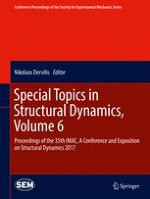2017 | Buch
Special Topics in Structural Dynamics, Volume 6
Proceedings of the 35th IMAC, A Conference and Exposition on Structural Dynamics 2017
herausgegeben von: Nikolaos Dervilis
Verlag: Springer International Publishing
Buchreihe : Conference Proceedings of the Society for Experimental Mechanics Series
